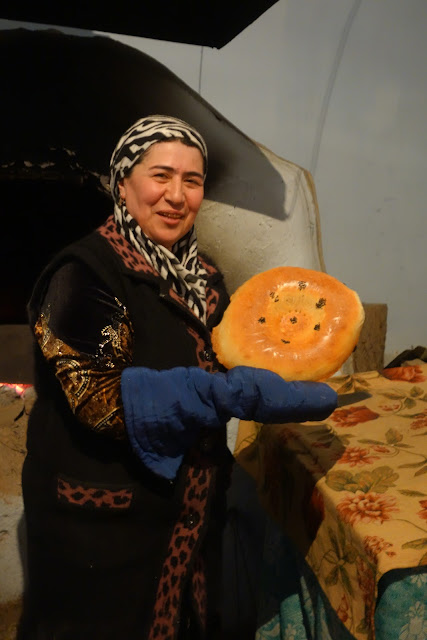The excerpt from wikipedia- The Registan was the heart of the ancient city of Samarkand of the Timurid dynasty, now in Uzbekistan. The name Rēgistan means "Sandy place" or "desert" in Persian. The Registan was a public square, where people gathered to hear royal proclamations, heralded by blasts on enormous copper pipes called dzharchis - and a place of public executions. It is framed by three madrasahs (Islamic schools) of distinctive Islamic architecture. The three madrasahs of the Registan are: the Ulugh Beg Madrasah (1420), the Tilya-Kori Madrasah (1660) and the Sher-Dor Madrasah (1636). Madrasah is an Arabic term meaning school.
Ulugh Beg Madrasah (1420) The Ulugh Beg Madrasah, built by Ulugh Beg during the Timurid Empire era of Tamerlane, has an imposing iwan with a lancet-arch pishtaq or portal facing the square. The corners are flanked by high minarets. The mosaic panel over the iwan's entrance arch is decorated by geometrical stylized ornaments. The square courtyard includes a mosque and lecture rooms, and is fringed by the dormitory cells in which students lived. There are deep galleries along the axes. Originally the Ulugh Beg Madrasah was a two-storied building with four domed darskhonas (lecture rooms) at the corners. The Ulugh Beg Madrasah was one of the best clergy universities of the Muslim Orient in the 15th Century CE. Abdul-Rahman Jami, the great Persian poet, scholar, mystic, scientist and philosopher studied at the madrasah. Ulugh Beg himself gave lectures there. During Ulugh Beg's government the madrasah was a centre of secular science.
our two male group members- excellent sports given the amount of shopping going on for most of the females in the group- Rusty on the left and Tim on the right...
Sher-Dor Madrasah (1636) In the 17th century the ruler of Samarkand, Yalangtush Bakhodur, ordered the construction of the Sher-Dor and Tillya-Kori madrasahs. The tiger mosaics on the face of each madrassa are interesting, in that they flout the ban in Islam of the depiction of living beings on religious buildings.
Tilya-Kori Madrasah (1660) Ten years later the Tilya-Kori meaning "Gilded" Madrasah was built. It was not only a residential college for students, but also played the role of grand masjid (mosque). It has a two-storied main facade and a vast courtyard fringed by dormitory cells, with four galleries along the axes. The mosque building is situated in the western section of the courtyard. The main hall of the mosque is abundantly gilded.
so lots of photos but the place was so magnificent I couldn't help myself- here are a few more along the way-
and after we left and headed out to the bakers home we passed this lovely little tower in a courtyard along the way...
At the bread lady's house we made bread and ate bread hot out of the ovens - sooo good! So for dinner we all begged to be given only salad and soup in the hotel - twelve hours of adventure was enough for all of us...
So the next day is a full day of touring again- with what I would call the ultimate mounment the Shah-I-Zinda Mausoleums and a wonderful green market and another couple of fabulous meals so come on along.... stay tuned for the next installment!




































No comments:
Post a Comment